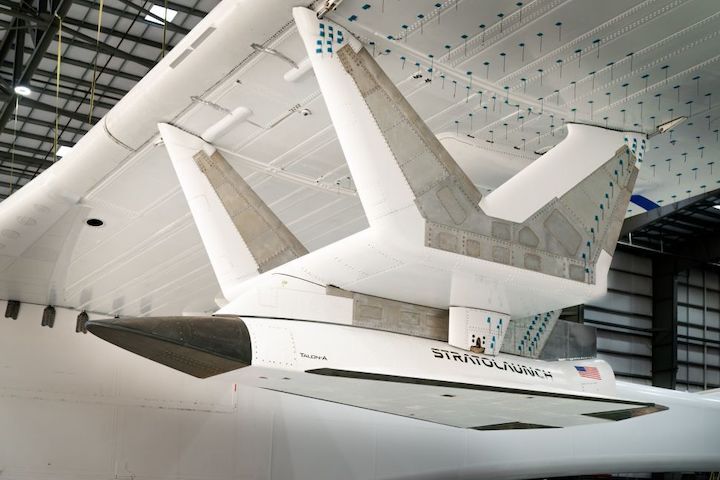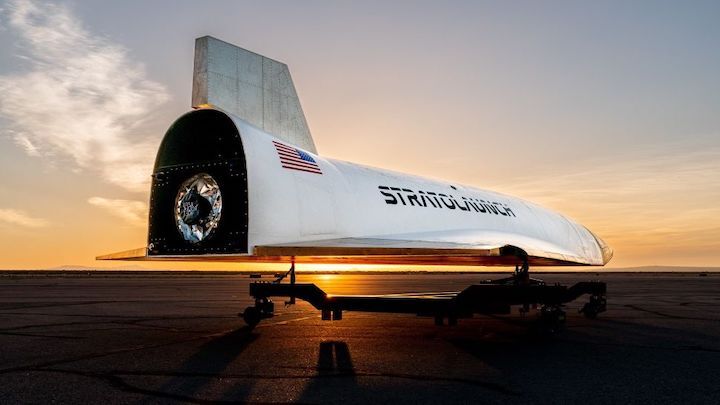Fresh off its fifth flight of the biggest airplane ever built, Stratolaunch is readying to test a hypersonic vehicle that will launch from the huge Roc carrier aircraft.
The Mojave, California-based company announced(opens in new tab) May 26 that it has structurally completed the Talon-A test vehicle, known as TA-0. A future flight of Roc will release TA-0, which is unpowered, to assess Roc's systems. (The news comes just weeks after Stratolaunch's May 4 flight to check out Roc's landing gear, among other items.)
"After completing TA-0 separation testing, the company will transition to flying its first hypersonic test vehicle, TA-1," Stratolaunch stated, noting the news was first disclosed exclusively to Aviation Week(opens in new tab). "The team has also started fabrication of a third vehicle, TA-2, the first fully reusable hypersonic test vehicle," Stratolaunch representatives added.
Stratolaunch initially was going to do the first drop tests with Roc and Talon-A in early 2022, but likely now will achieve full operational capability by mid-to-late 2023, company representatives have said.
TA-0 should do a captive carry flight later this year, Stratolaunch added on May 26, meaning the vehicle will be tested underneath Roc to see how the test article affects the flight dynamics of the 385-foot (117-meter) carrier aircraft. Drop tests will occur with later generations of Talon-A at some undisclosed date.

Stratolaunch was originally envisioned as a satellite midair launcher. Established in 2011 by Microsoft co-founder Paul Allen, the first test flight took place in April 2019, about six months after Allen died of cancer.
A few months later, in October 2019, a new set of owners bought the company with a fresh iteration of sending hypersonic vehicles aloft. These sorts of vehicles travel at least five times the speed of sound and have lately been the focus of numerous military programs in the United States amid reports that Russia and China are focusing their developments on these high-speed systems.
Earlier in May, for example, DARPA's Glide Breaker hypersonic missile interceptor program announced a Phase 2 of its program "to conduct wind tunnel and flight testing of jet interaction effects," as the U.S. military agency stated at the time. The agency also recently announced that a Lockheed Martin hypersonic missile prototype flew at five times the speed of sound "for an extended period" as part of a separate program, the Hypersonic Air-breathing Weapon Concept (HAWC). Raytheon Technologies(opens in new tab) completed a HAWC test of its own in September 2021, too. Roc's latest flight, on Star Wars Day (May 4), aced its fifth test from Mojave Air and Space Port after completing its third and fourth test flights at the same location earlier in 2022. The Talon hypersonic vehicles will use a pylon that just flew for the first time on that fifth test flight, Stratolaunch said.
The 8,000-pound (3,600 kg) pylon includes a winch "that will load Talon-A vehicles onto the platform from the ground, expediting launch preparation and reducing the need for ground support," Stratolaunch stated.
The hope is the hypersonic test program will allow for outcomes such as technology development, science research or demonstrating key components for high-speed work, the company added.
Quelle: SC


